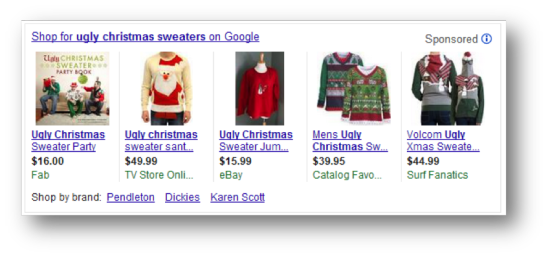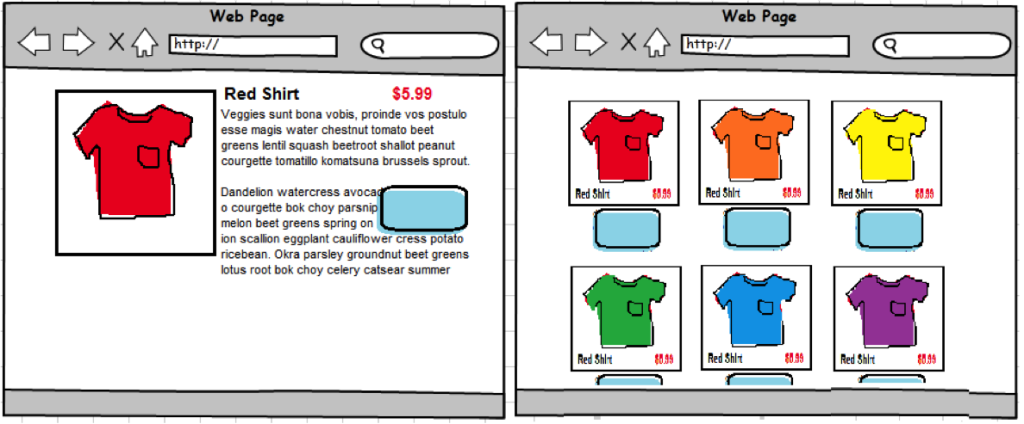Earlier this week, we hosted a webinar with Francis Shovlin and Ally Malick from SEER Interactive on Search Engine Marketing (SEM) optimization for ecommerce. There’s no denying it, those cats know their stuff. We wanted to pass along a few things we learned from them and share some insights. By doing a few simple things, you can gain insights to performance that you wouldn’t have available just by running Adwords.
1. Tag your URLs
The easiest thing to do in Google AdWords is to go into “my account” and enable the auto-tag feature. If you want to get really granular, make sure you are tagging manually by setting tags up in Google URL builder. It is better to start off with too much detail and have all of the information in your analytics, than to not tag and not be able to retroactively figure out where traffic is coming from.
2. Modify your Google Analytics codes to track revenue

Adwords can show you that your brand name is driving the majority of your sales. That’s great, but when people search your brand, what are they looking for? When you look in Google Analytics, you can see what exactly that term is driving people to purchase.
If it turns out that most people that search “your brand name” are buying one product, or one type of product, you can adjust your ad copy, landing pages and maybe even highlight a featured product on your homepage.
3. Update your ads to match your inventory
Driving people to product pages that have no inventory is not a good user experience. Take the time to turn ad groups on and off depending on availability, or make it clear when the item will be back in stock. Unless you can promise a specific date of restock and allow the customer to order it right then, don’t advertise what you can’t sell.
4. Test bids on research keywords


Assign unique strategies based on intent of query. Some people are searching with intent to buy and some people are searching the Internet just to do a little research. While it is tempting to eliminate research terms altogether, why sabotage the very top of your funnel? The research crowd might not have a high return value initially, but one day, they’ll be ready to buy. By using the conversion assist report, you can calculate the true value of each keyword over time, even if they seem like lower return keywords to start.
5. Remarket to both converted and haven’t-bought-yet users
There are many user situations that you can use for remarketing: First, target users who abandoned their shopping cart, reminding them that they should buy what they were looking for. If customers from a certain channel have a lower CLV, target that channel and give them more opportunities to buy. Upsell users that have previously converted. Don’t forget about users that have only signed up for newsletters, serve them ads to buy!
6. Always test offers and test ad copy.
Don’t go with what you think will work best based on common sense.

When testing, make sure you have your ads set to rotate indefinitely, not optimize for clicks. Do you own testing, as you don’t want the most clicks, you want the ad that brings in the most revenue. This is a very important difference for ecommerce sites!
7. Learn how to use ad extensions & targeting
If you go back to point #2, we list a great reason to use sitelink extensions. If people searching for your brand typically end up buying a couple of items, you can highlight those product pages with sitelink extensions. If you are running mobile campaigns, or often get calls about online purchases, use the call extension to put your phone number directly in the ad. The newest extension that Google offers is the offer extension. Give your users the opportunity to hand over their email directly in your ad.
8. Take advantage of the prominent placing of Product Listing Ads (PLAs)

SEER gave some encouraging stats on PLAs and why you need to be using them. 8 out of the top 20 Adwords advertisers had more impressions from PLAs than standard text ads. One SEER client saw 33% cheaper cost per clicks (CPCs) for comparable keywords and also had an 11% higher conversion rate. By pulling regular search query reports and adding negatives, you can optimize and eliminate inefficient spend.
9. If you are running mobile ads, optimize your site for mobile
Are you opted into mobile? Product images should be large and clear on a smartphone and it should be easy to go from the product page, through the checkout process. Think about making the add to cart button thumb-clickable. Remember, if you are sending ad traffic to mobile and you haven’t optimized for it, your ad quality score will plummet. Best case scenario, make everything mobile friendly, but if you can’t do that, make sure you opt out of mobile ads!
10. Create specific product landing pages to maximize conversion rates

Say someone is searching for a red shirt. Do you send them to a page that only has a red shirt, or do you send them to a page that shows them many shirts? You might have more conversions by sending them directly to the item they’ve searched for, but you might have a higher AOV by sending them to a page with shirts in every color.
Watch the full SEM Optimization for Ecommerce webinar
If you’d like to learn more about SEM optimization for ecommerce, watch the entire webinar. We think you’ll be impressed with how much information SEER Interactive shared.

